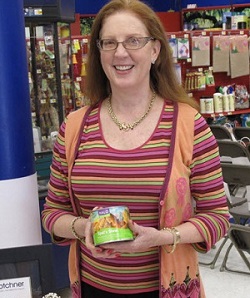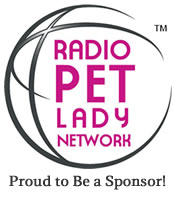 This is a fabulous time of the year to be outside with your pets while you do a late Spring clean up of your flower beds and shrubbery and put in new plantings. However, managing your garden can also present dangers to your pets which you probably don’t even realize.
This is a fabulous time of the year to be outside with your pets while you do a late Spring clean up of your flower beds and shrubbery and put in new plantings. However, managing your garden can also present dangers to your pets which you probably don’t even realize.
Plants to Avoid at All Costs
There are a number of common garden shrubs and flowers which have no business being on a property where pets reside. Many people do not realize that amaryllis, rhododendron, chrysanthemum, dieffenbachia and lilies are all highly toxic to dogs and cats. Not only should you avoid adding them to your landscaping, you should seriously consider removing them if you already have them in the ground. Otherwise, consider fully fencing them off from pets.
For more about plants toxic to dogs and cats, click here to the Cornell University website.
Embrace your Weeds and Dandelions!
In the all-American quest for a lawn that is a smooth carpet of green, you may very well be creating a chemically infused landscape. The most dangerous thing many gardeners touch is probably the “fertilizer” they spread all over the lawn, not realizing that most of the commercial products use chemicals to help grow a luscious green lawn and are also laden with poisons to kill weeds.
 Those toxic ingredients pose a terrible danger to pets (and small children, too) who are all over the grass, nibbling on it, getting it on their paws and then licking it off later. Dogs and cats are grazers, frequently nibbling on grass, which is unfortunately now drenched in herbicides and pesticides.
Those toxic ingredients pose a terrible danger to pets (and small children, too) who are all over the grass, nibbling on it, getting it on their paws and then licking it off later. Dogs and cats are grazers, frequently nibbling on grass, which is unfortunately now drenched in herbicides and pesticides.
Don’t be afraid of weeds! Once you cut them when you mow, they don’t look all that different than grass. There are many good organic fertilizers for the lawn and garden and companies that have “Safe Paws” education about natural gardening solutions for organic weed and insect control.
A few tips everyone should keep in mind are:
* Keep compost in an area or container pets cannot access – decomposing organic material can seriously sicken pets while it is breaking down.
* Never put bones or other waste human food materials in compost because ti is too attractive to pets, who may go to great lengths to access it.
* Never use cocoa mulch which is really appealing to dogs and has been linked to fatalities.
* Be very careful about any mulch you use to top dress garden areas – it can smell or taste good to dogs and can contain mold or bacteria if it has been bagged or piled up for long periods.
* Grass clippings can be fatal to dogs if they become moldy, depending on the type of grass and grass seeds – disperse grass after mowing, so not allow it to pile up anywhere.
* Mow grass frequently to make it less hospitable to insect and parasite populations.
* Do not allow even small amounts of water to form a pool in pots, bird baths, or wheelbarrows since standing water becomes a breeding ground for bacteria, parasites, and mosquitoes.
* When fertilizing the garden with organic preparations (like fish emulsion or chicken or cow manure) be aware that they are highly aromatic to dogs and cats, who will be drawn to eat that treated soil. Monitor your pet outdoors in the early gardening period when applying these products and try to dissuade your pet from ingesting your gardening handiwork. One way to do this is to dramatically say “Oh no!” or Uh oh!” to interrupt their interest in the area and then say “Good girl!” and send them away from the garden by tossing a high value treat (like a Halo Liv-a-Little pure protein treat) at a distance, making a game of it.

Tracie Hotchner is the author of THE DOG BIBLE: Everything Your Dog Wants You to Know and THE CAT BIBLE: Everything Your Cat Expects You to Know.
She is also a renowned pet radio host and producer, having spent 7 years on the Martha Stewart Channel of Sirius/XM with CAT CHAT® and even longer with her award-winning NPR radio show DOG TALK® (and Kitties, Too!) that continues to broadcast in the Hamptons and the Berkshires. Her most recent accomplishment is the pet talk radio network she has created on the Internet called The Radio Pet Lady Network.
